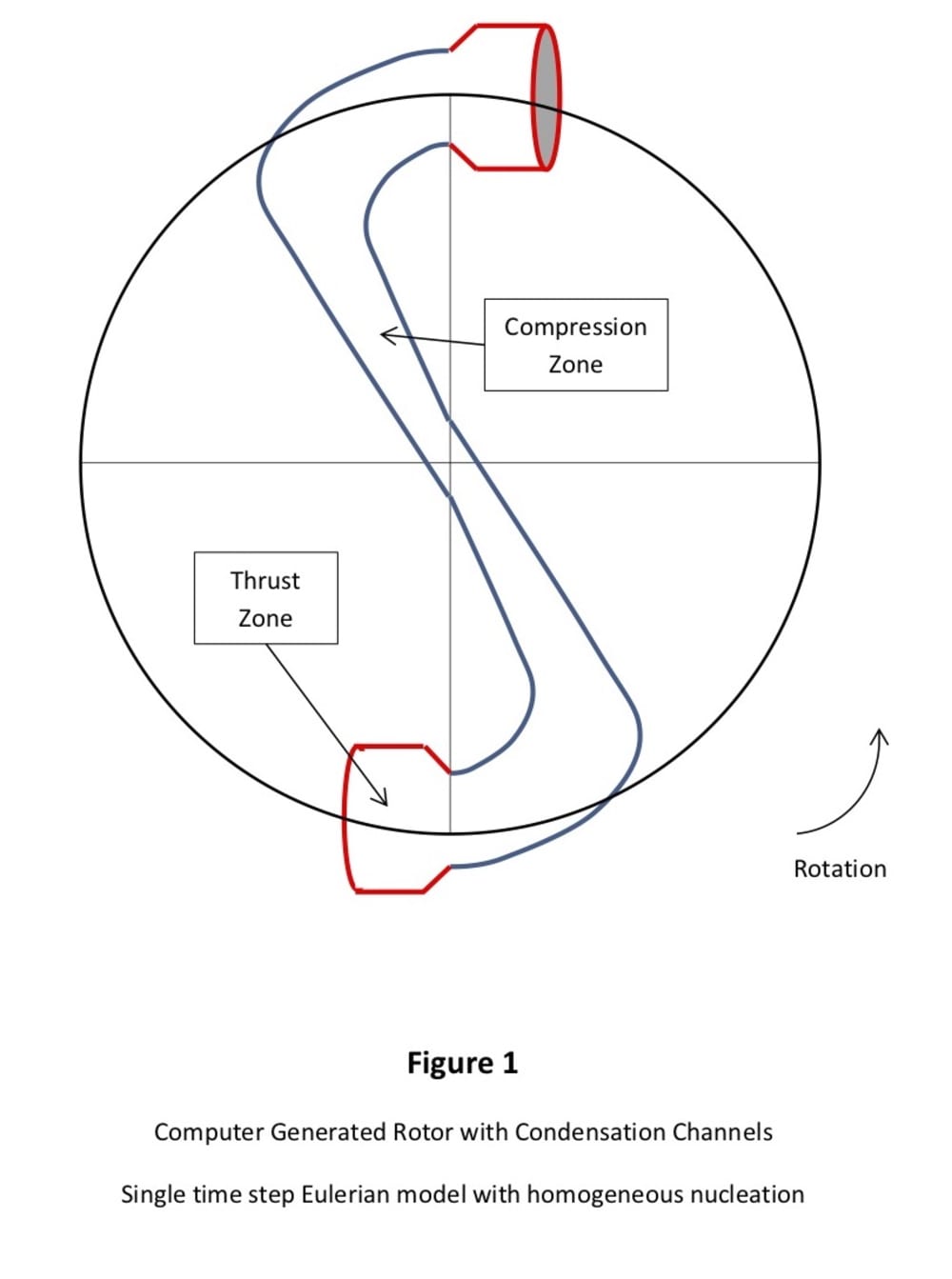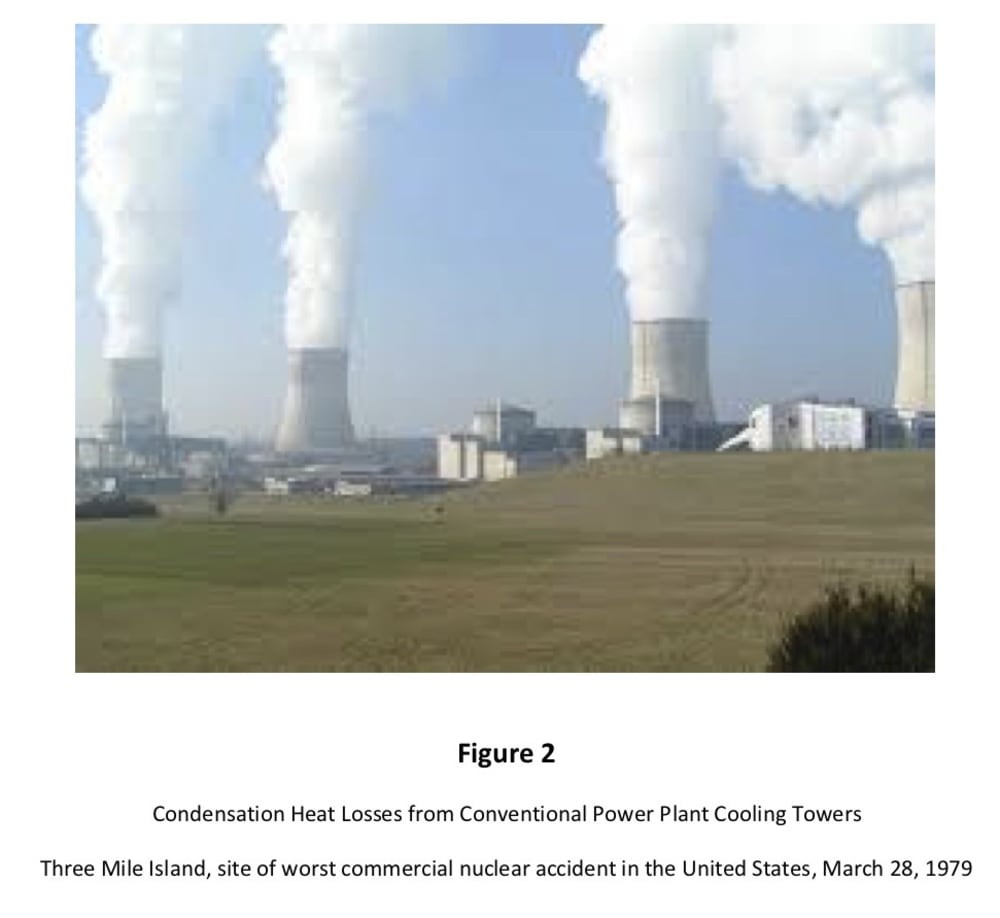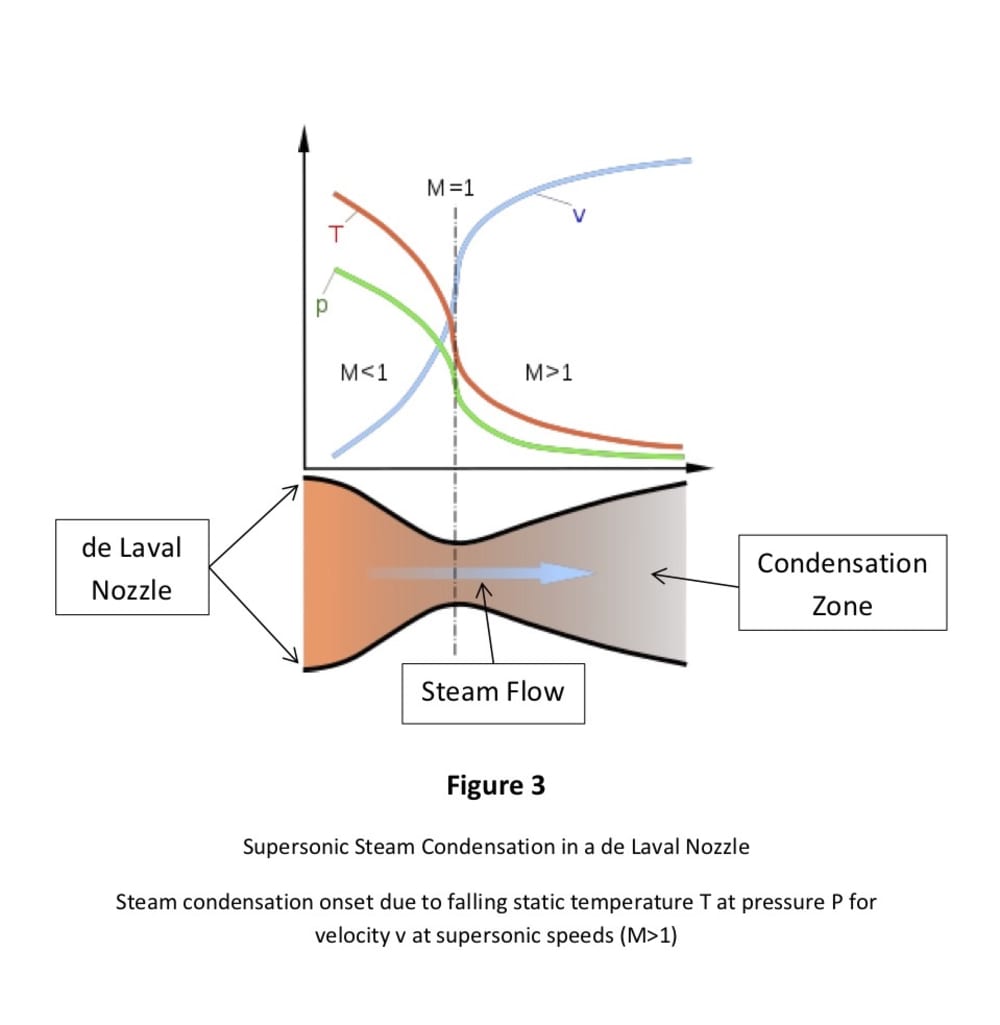The International Energy Agency states that current technology can provide only half of the CO2 reductions required by 2050. The major shortfall is energy, notably for the increasing global need for electrical power.
Steam turbines presently generate 89% of the world’s electricity, but they waste 2/3 of their fuel. The underlying problem is that steam passing through turbines eventually cools and begins to condense. To prevent the resulting water droplets from destroying the delicate turbine blades, the generating process is stopped at this point, and the spent steam is instead condensed in the cooling tower (Figure 2). This steam, however, still retains the immense heat of condensation.
The new technology recovers this heat by replacing the cooling tower with a new rotor based on Hero’s aeolipile. Because this ancient reaction turbine has no blades, condensate droplets can cause no blade damage. Unfortunately, Hero turbines are so inefficient that they are commonly seen only as rotary lawn sprinklers. Our US Patent 9,255,478 shows, however, how to improve this efficiency in gas turbine applications.
The new system extends this earlier work to capture the heat of condensation. The underlying principle is that steam condenses readily at supersonic speeds (Figure 3). By inducing this condensation within unique channels in the new rotor (Figure 1), the resulting released heat raises the temperature of the remaining steam. This released heat acts much like the heat that is released from fuel combustion in a common jet engine, the net result in both cases being increased thrust. The rotor in the new technology then uses this thrust to turn a shaft, thereby generating electrical power.
Early prototypes of this technology are currently being refined for ease of manufacture, notably 3D printing. Because the new technology operates at much milder conditions than are required in conventional steam turbines, the unit manufacturing costs of these new units will be less than 10% of current levels.
The efficiencies of such advanced units may eventually reach 90%, versus the conventional 35%. These unmatched efficiencies, however, do not violate Carnot’s maximum: Carnot’s limit is derived from ideal gas laws, and therefore does not apply to the phase changes in the liquid/gas mixtures of the new technology.
Beyond these greatly improved efficiencies, another major advantage of the new technology is the ability to operate at the boiling point of steam, which is several hundred degrees below conventional turbine operating temperatures. This unique feature is crucial for green systems, which typically cannot reach fossil fuel combustion temperatures. The new system can therefore be used with solar thermal, geothermal, and wind thermal sources that are currently inadequate for green applications. Furthermore, the heat from even quite weak sources can be combined to drive hybrid rotors that can be used anywhere, not just ideal green locations.
Finally, the new system eliminates the current need for expensive cooling towers and for large volumes of increasingly scarce cooling water.
With these features, the new patent-pending technology is ready to revolutionize the growing, multibillion dollar power generating market.
Like this entry?
-
About the Entrant
- Name:Howard Purdum
- Type of entry:individual
- Software used for this entry:(Self-Written), Ansys Fluent, Microsoft Excel/MSBasic, Fortran
- Patent status:pending








